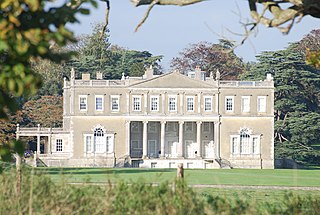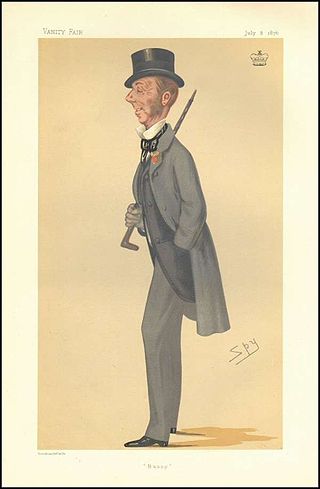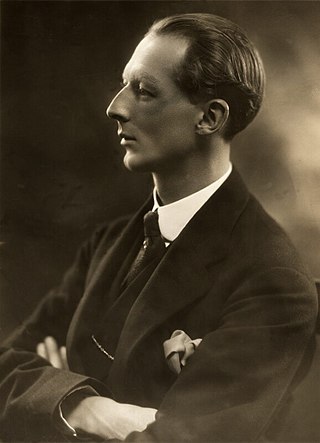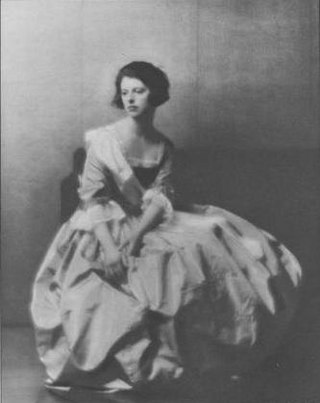
Baron Alington was a title that was created three times in British history. The first creation came in the Peerage of Ireland on 28 July 1642 when William Alington was made Baron Alington, of Killard in the County of Cork. His second son, the third Baron, was a Major-General in the English Army. On 5 December 1682 he was created Baron Alington, of Wymondley in the County of Hertford, in the Peerage of England. The English barony became extinct on the death of his young son Giles, the fourth Baron, in 1691. The late Baron was succeeded in the Irish barony by his uncle, the fifth Baron. He was a captain in the army. On his death, in February 1723, the Irish barony became extinct as well.

Long Crichel is a small village and former civil parish, now in the parish of Crichel, in east Dorset, England, situated on Cranborne Chase five miles northeast of Blandford Forum. In 2001 it had a population of 81. The civil parish was abolished on 1 April 2015 and merged with Moor Crichel to form Crichel.

Moor Crichel is a village and former civil parish, now in the parish of Crichel, in East Dorset, England situated on Cranborne Chase five miles east of Blandford Forum. The civil parish includes the hamlet of Manswood notable for a terrace of twelve thatched cottages. Dorset County Council's 2013 estimate of the parish population is 140. In the 2001 census the parish had a population of 180. In the 2011 census the population of Moor Crichel parish combined with the neighbouring parish of Long Crichel was 246. The civil parish was abolished on 1 April 2015 and merged with Long Crichel to form Crichel.

Horton is a village in East Dorset, England, situated on the boundary between the chalk downland of Cranborne Chase and the Dorset Heaths, and ten miles north of Poole. The village has a population of 515 (2001).

Thomas Lionel Dugdale, 1st Baron Crathorne,, known as Sir Thomas Dugdale, 1st Baronet from 1945 to 1959, was a British Conservative Party politician. He resigned as a government minister over the Crichel Down Affair, often quoted as a classic example of the convention of individual ministerial responsibility.

Humphrey Sturt was a British landowner, architect and politician who sat in the House of Commons from 1754 to 1784.
The Crichel Down affair was a British political scandal of 1954, with a subsequent effect and notoriety. The Crichel Down Rules are guidelines applying to compulsory purchase drawn up in the light of the affair.

Captain Napier George Henry Sturt, 3rd Baron Alington was a British peer, the son of Humphrey Sturt, 2nd Baron Alington.

Henry Gerard Sturt, 1st Baron Alington, was a British peer, Conservative Party politician, and notorious slum landlord in the East End of London.

Cranborne Chase School was an independent boarding school for girls, and was located in the English counties of Dorset and (later) Wiltshire, between 1946 and 1990.

Evan Frederick Morgan, 2nd Viscount Tredegar,, FAGS, FIL was a Welsh poet and author. On 3 March 1934, he succeeded to the title of 6th Baronet Morgan, 4th Baron Tredegar, and 2nd Viscount Tredegar, after the death of his father.

John and William Bastard were British surveyor-architects, and civic dignitaries of the town of Blandford Forum in Dorset. John and William generally worked together and are known as the "Bastard brothers". They were builders, furniture makers, ecclesiastical carvers and experts at plasterwork, but are most notable for their rebuilding work at Blandford Forum following a large fire of 1731, and for work in the neighbourhood that Colvin describes as "mostly designed in a vernacular baroque style of considerable merit though of no great sophistication.". Their work was chiefly inspired by the buildings of Wren, Archer and Gibbs. Thus the Bastards' architecture was retrospective and did not follow the ideals of the more austere Palladianism which by the 1730s was highly popular in England.

Ince and Mayhew were a partnership of furniture designers, upholsterers and cabinetmakers, founded and run by William Ince (1737–1804) and John Mayhew (1736–1811) in London, from 1759 to 1803; Mayhew continued alone in business until 1809. Their premises were located in Marshall Street but were listed in London directories in Broad Street, Soho, 1763–83, and in Marshall Street, Carnaby Market, 1783–1809. The partnership's volume of engraved designs, The Universal System of Household Furniture, dedicated to the Duke of Marlborough, was issued in imitative rivalry with Thomas Chippendale; Ince, who was a subscriber to the first edition of Chippendale's Director, was chiefly responsible for the designs, while Mayhew contributed the greater part of the partnership's capital, kept the accounts, and was in closer contact with the firm's clientele among the nobility and gentry. The name of the firm originally appears to have been "Mayhew and Ince", but on the title page of The Universal System the names are reversed, suggesting that Ince was the more extensive contributor.
Henry Charles Sturt, of Crichel House, Dorset, was a British landowner and politician.
Sir Robert Napier (c.1542-1615), was an English-born judge who served in Ireland. He was later to become a long-serving member of Parliament.

Winifred Selina Hardinge, Baroness Hardinge of Penshurst, CI was a British aristocrat, courtier and Vicereine of India.
Mary Anna Sibell Elizabeth Marten OBE was an English aristocrat and landowner who made legal history in the Crichel Down affair.
Sir Nathaniel Napier, 3rd Baronet, of Moor Crichel, Dorset, was an English landowner and politician who sat in the English House of Commons from 1695 to 1708 and in the British House of Commons from 1710 to 1722.

The Honourable Lois Ina Sturt was one of the Bright Young Things of the 1920s. Later the lover of the Earl of Pembroke and the Duke of Kent, she married Evan Morgan, 2nd Viscount Tredegar.
Napier Anthony Sturt Marten is a British aristocrat and former page to Queen Elizabeth II from 1973 to 1975. He is known for his connection to the Sturt-Marten family, a lineage of wealthy landowners with historical ties to the British royal family and his mother's friendship with Queen Elizabeth II.














